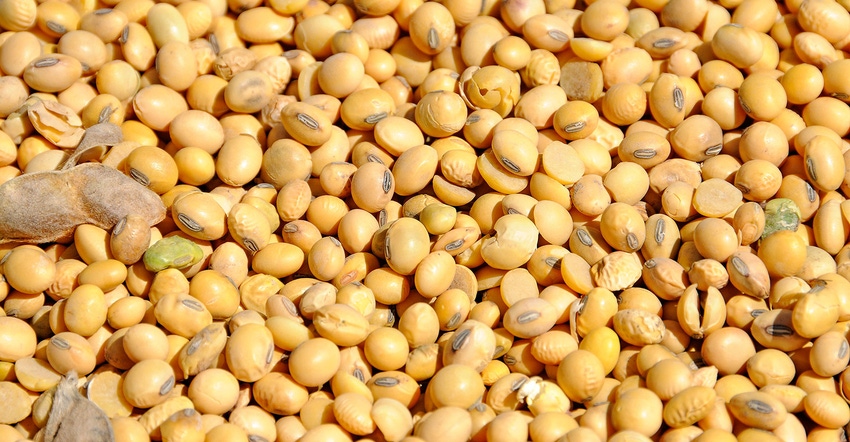
Soybean producers are being encouraged to take extra precautions to sample soybean seed this season to test for both germination and potential accelerated aging.
Reports from the Mid-South, Southeast and Midwest indicate potential problems.
“We are expecting to see problems with the soybean seed that we will be planting this spring,” says Jeremy Ross, University of Arkansas Extension agronomist.
“We do expect to see lower germination on some varieties in North Carolina this upcoming season due to seed production challenges in 2018 from adverse weather,” says North Carolina soybean specialist Rachel Vann.
“We have been encouraging growers to check their germination percentages and adjust seeding rate accordingly.”
“It is always a good idea to check germination rates,” says Trent Irby, Mississippi State University, Extension soybean specialist. “If these rates are low or lower than normal, producers need to know. In this particular situation, producers shouldn’t cut back on seed at risk of not reaching a proper plant population to maximize yield potential.
“So, what can be done to account for a reduction in germination rate? Producers first need to be aware of the issue. The bottom line is that it is a good idea to test the seed and adjust seeding rates as necessary.”
“I’m concerned with the germinations numbers, but more concerned with the accelerated aging (AA) numbers,” says Ross. “The AA is performed by exposing the seed samples to elevated humidity and temperature for 48 hours, and then a standard germination test is performed on these samples. The AA gives an indication of how these samples will perform under adverse conditions, especially later in the planting window when we have elevated soil temperatures.”
Extra sampling
He says germination tends to stay fairly stable from harvest to planting. “But the AA is continually dropping from harvest to planting. From previous research, the AA will dramatically decline around the end of May to the first of June.”
To be on the safe side, farmers will need to spend a little more money. Ross recommends producers sample each lot of seed they will be planting and submit the samples to the Arkansas State Plant Board to test for germination and accelerated aging. Cost is $20 for both tests for each sample.
“All seed companies are required by law to state the germination on a bag of seed,” Ross says. “However, some do not run the AA or provide the AA results to producers. It takes about two weeks to obtain the test results from the Plant Board, so this is something that needs to be done well in advance of planting.”
With these additional test results, producers can adjust seeding rates and planting arrangements of the seed lots.
“I would hold the lots with better AA numbers for later plantings (mid-May and later).”
How about seed treatments?
“Several seed-borne diseases appear to be showing up in elevated numbers due to the environmental conditions seen during the 2018 harvest,” Ross says. “Many seed-borne diseases can be controlled with fungicide seed treatments. However, a fungicide/insecticide seed treatment will not dramatically increase a seed lot with exceptionally low germination and AA numbers.”
Seed treatments have limits, Ross explains. “They will maintain and protect germination and AA of a specific lot.” Growers should expect better stands when using these seed treatments than without them.
Seed treatment
“We are recommending applying a fungicide/Insecticide seed treatment for planting in 2019. The two main reasons are that we need to maintain what quality we have in our seed lots, and with the tight supply of seed this year, if producers have stand failures, they probably will not be able to get the same variety they planted initially.
“Soybean producers should to do everything they can to insure an adequate plant population on the first try in 2019.”
Vann agrees. “I have heard industry dialog regarding the importance of fungicidal seed treatments to protect all seeds that have a chance to germinate.”
Below are numbers from the Arkansas State Plant Board from the non-certified soybean samples submitted for germination and accelerated aging (AA) from 2017 and 2018.
2017
As of Jan. 1, 2018: 90 percent average germination (634 samples); 14-99 percent germination; 10 percent below 80 percent germination.
82 percent AA (435 samples) 20-99 percent AA; 8 percent below 65 percent AA.
2018
As of Jan. 31, 2019: 76 percent average germination (809 samples) 0-99 percent germination; 40 percent below 80 percent.
59 percent average AA (480 samples); 0-99 percent AA; 48 percent below 65 percent.
Staff writers Brad Robb and John Hart contributed to this story.
About the Author(s)
You May Also Like






